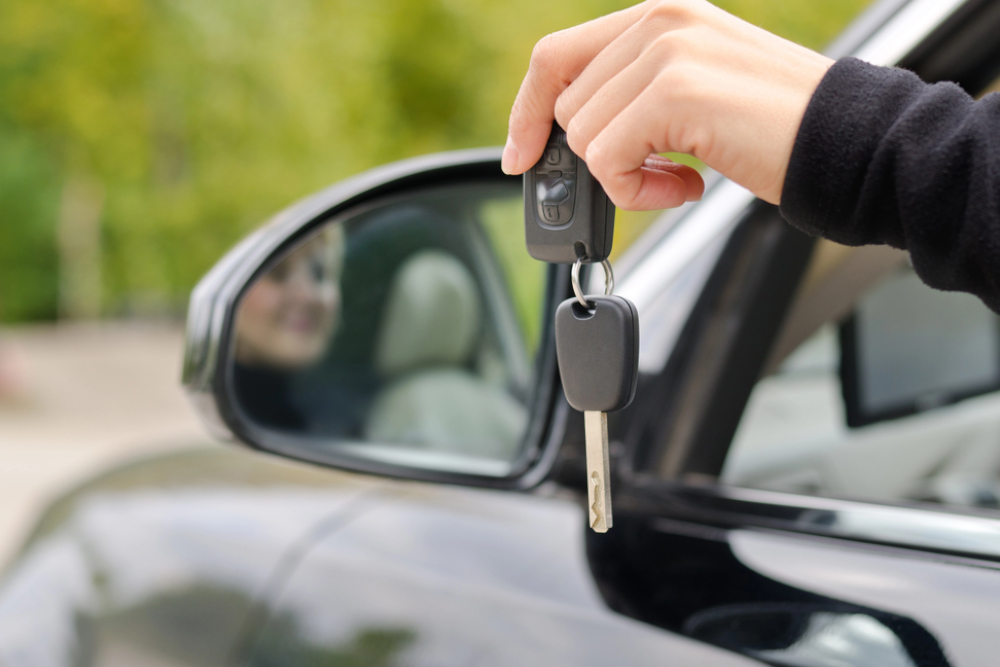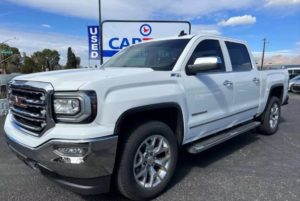Many drivers start their search with one big question: “how much can I sell my car for in today’s market?” It is a fair question, especially with rising demand for used vehicles and wide differences in pricing from one seller to another. The value of a car changes based on a mix of age, mileage, location, condition, and current market trends. Each factor shapes the number you can expect before you meet with a buyer or a dealership. Our team at Car Time Supercenter has seen these patterns many times in our four decades of helping drivers move on to their next vehicle.
Understanding what shapes pricing helps you take your next steps with confidence. Every car has a story, and that story influences how buyers view it. When you know how buyers think, it gets easier to judge the market and make smart choices.
The Role of Age and Mileage in Car Pricing
Age and mileage are two of the biggest factors that shape a car’s value. A newer vehicle often carries a higher price because it tends to have fewer mechanical issues and more features that shoppers want. A car that has lived through many years on the road often shows signs of wear even with good care. Buyers look at this and adjust their offers.
Mileage also shapes value in a big way. Many shoppers believe that a car with lower mileage has lived an easier life. A high-mileage car can still run well, yet the perception of extra wear lowers its market value. A car with a balance of age and mileage often stands out in the used market.
How Make and Model Influence Buyer Interest
Some brands keep their value longer than others. Buyers trust certain makes for long-term durability, lower repair costs, or strong performance. This trust shows up in resale numbers. A popular SUV or pickup may bring higher offers because these segments stay in demand across many markets.
The model also plays a role. A trim with advanced features, strong safety ratings, or a well-known reputation tends to bring stronger offers than the base version of the same car. Buyers look at what the model delivers and decide how much they are willing to pay based on long-term benefits.
Vehicle Condition and Its Impact on Price
Condition plays a major part in pricing. A clean interior, smooth ride, and solid mechanical performance can lift your car’s value in a meaningful way. A car with cosmetic damage or interior wear brings down the offer, even if it still drives well.
Maintenance history also supports value. Many buyers ask for service records because they want evidence of steady care. A car that has regular oil changes, new tires, or recent repairs often gets a better number because buyers feel more at ease with the purchase.
A car with mechanical issues can still attract interest, but buyers reduce their offers when they budget for repairs. Even so, interest remains because many drivers prefer a lower sale price if they have experience working with cars or want a project they can manage.
The Influence of Location on Pricing
Your region can affect how buyers view your car. Some areas show higher demand for trucks or larger vehicles due to climate or lifestyle habits. Other regions look for compact cars that help with city driving. A car that fits local trends often brings stronger interest.
Local market conditions also shift price ranges. A city with many used car shoppers often pushes values up due to competition. A location with fewer shoppers or limited demand may lower offers. This variation is normal in the used car market.
Color, Features, and Added Options
Color may seem like a small detail, yet it plays a role in resale value. Neutral colors like white, black, gray, and silver appeal to more buyers, which helps with pricing. Bright or uncommon colors often take longer to attract the right buyer, though they still attract the right buyer who wants something unique.
Features also shape value. Heated seats, upgraded audio, built-in screens, safety systems, and other modern features increase appeal. These additions create convenience and comfort, and buyers notice that during their search for the right vehicle.
Private Sale, Trade-In, or Dealership Purchase
Your selling path influences the number you receive. A private sale often gives you the highest dollar amount because you work with buyers directly. A private buyer may pay more if they like the car, yet the process can take time and energy as you answer messages, meet buyers, and discuss price.
A trade-in gives you the fastest route. You hand over your car as part of the transaction for your next vehicle. The number may be lower than a private sale, yet this option saves time and effort. Many drivers choose this path because it moves the process forward with less stress.
A dealership purchase without a trade-in is another option. You bring your car in, the team reviews it, and you receive an offer on the spot. Many drivers prefer this approach because it is simple and avoids long waiting periods.
Each path works for different needs. The right choice depends on your timeline and comfort level.
Market Trends and Timing
The used market shifts from season to season. Some parts of the year bring higher demand due to tax refunds or seasonal travel patterns. This demand pushes prices up. Slower seasons can bring lower offers as buyers take their time.
Trends also move with fuel prices. When fuel costs rise, smaller cars and hybrids see stronger demand. When fuel prices fall, trucks and SUVs often rise in popularity. These market swings influence how buyers approach your car.
Timing your sale during a stronger season can help you receive a higher offer. Many drivers study the local market for a short period before deciding on the right moment.
How to Prepare Your Car Before Selling
A clean car makes a strong first impression. A quick wash, a vacuum session, and small touch-ups help buyers see the car’s potential. Clear visibility of the interior and exterior builds trust and increases buyer interest.
Removing personal items also helps. Buyers want to imagine the car as their own. A clean and open space makes that vision easier.
Gathering documents supports your listing as well. Items like the title, service records, and receipts give buyers the information they need to feel good about the purchase.
Setting a Fair Asking Price
A fair price attracts more buyers. The right number sits close to current market ranges for similar vehicles in your area. Researching recent listings, local sale prices, and online valuation tools helps you understand what buyers expect.
Setting the number too high slows interest. Setting it too low may leave money on the table. A balanced starting point helps you move the process forward with confidence.
Negotiation Expectations
Many buyers expect some negotiation. This conversation is normal and part of the selling experience. Being clear on your lowest acceptable number helps you stay comfortable during discussion. A steady and calm tone helps keep the conversation productive.
Buyers feel more at ease when the seller communicates clearly. A smooth conversation often leads to a positive outcome for both sides.
About Car Time Supercenter
Our team at Car Time Supercenter has spent more than 40 years helping drivers in Tucson move into cars that fit their needs. Our family-owned background shapes the way we treat every guest who walks onto our lot. We offer a large inventory and simple financing options for shoppers with all kinds of credit backgrounds. Selling or buying a car can feel stressful, yet our goal is to make the process feel comfortable and honest from start to finish. If you want support as you move toward your next vehicle, our team is ready to help you take that next step with clarity and confidence.

There are good reasons people will buy their next used car in Tucson from Car Time Supercenter. But I think we are one of the most trusted used car dealerships mainly because we treat everyone like family. My family has provided quality, dependable local used cars to Tucson customers since 1984, and I’m proud to be a part of our continued success.
Like many family-owned businesses, I grew up going to work with my dad. Falling in love with cars was natural because of my father’s passion, and eventually, I came to love the car business just like him. I officially joined the Car Time Supercenter team in 2012, starting in the finance department. Over the past decade, I’ve learned the used car business and how to treat customers from my family and industry resources.
Today, I oversee marketing, social media, inventory, and reconditioning, so I play an essential role in delivering local Tucson used car buyers the best experience possible. I also help our family business keep up with the times while providing old-fashioned customer service. From attending NADA classes to becoming Allstate certified for back-end products, I continue to learn and add skills to serve our customers better.




